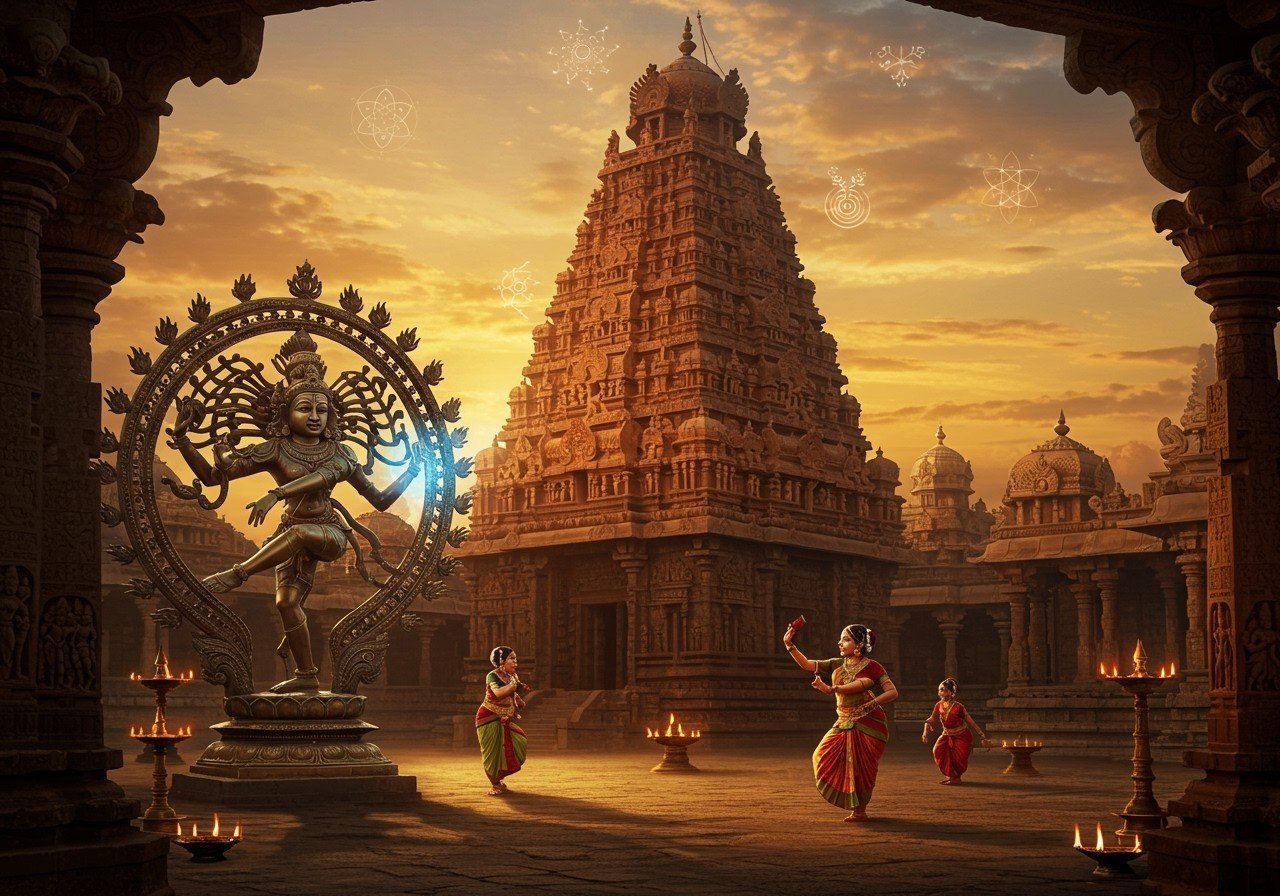The Chola Dynasty’s Enduring Legacy in South India: Architecture, Art, and Administration

The Chola Dynasty, a prominent power in South India from around 850 CE to 1250 CE, left an enduring legacy through their remarkable contributions to architecture, art, and administration. This blog post delves into the multifaceted impact of the Cholas, exploring their influence on Tamil Nadu’s cultural landscape.
The Rise of the Cholas
Emerging from the fertile Kaveri Delta region, the Chola dynasty rose to prominence under Vijayalaya Chola in the 9th century. Subsequent rulers like Rajaraja Chola I and Rajendra Chola I significantly expanded the empire. Their efficient governance structure, featuring a robust bureaucracy and local self-governance through village assemblies, fostered socio-economic growth through advancements in agriculture and trade, including the establishment of extensive maritime networks.
Chola Contributions: A Multifaceted Legacy
The Cholas’ contributions shaped South India in profound ways. Their architectural marvels, like the iconic Brihadeeswarar Temple in Thanjavur, stand as testaments to their ingenuity. Their patronage of art, literature, and education nurtured a flourishing of Tamil culture and language. Furthermore, advancements in irrigation technology, such as the Grand Anicut, demonstrate their commitment to progress and development. Their military achievements also brought wealth and stability, expanding the empire’s reach and influence.
Artistic Flourish Under Chola Patronage
The Cholas were great patrons of the arts, significantly advancing artistic expression. Chola sculpture, renowned for its intricate bronze statues of deities, showcases the mastery of lost-wax casting techniques. Murals and frescoes within Chola temples depict mythological and historical narratives, adding to the rich tapestry of artistic traditions that continue to inspire modern South Indian culture. Think of the iconic bronze Nataraja statue, a powerful representation of Shiva’s cosmic dance, as a prime example of Chola artistry.
Architectural Marvels: Temples and Beyond
The Chola Dynasty is celebrated for its architectural innovations, particularly in temple construction. Key elements like the towering vimanas (temple towers), elaborate gopurams (gateway towers), and spacious mandapas (pillared halls) define Chola architectural style. The Brihadeeswarar Temple, a UNESCO World Heritage site, exemplifies their architectural grandeur. Other notable temples such as Gangaikonda Cholapuram and Airavatesvara Temple, each with unique features and historical significance, further showcase the Cholas’ architectural prowess. This architectural legacy has deeply influenced Tamil Nadu’s cultural and religious life.
Administrative Prowess and Innovation
The Chola rulers implemented innovative governance practices. Detailed land surveys and efficient revenue collection systems ensured effective resource management. Local self-governance through village assemblies (sabhas) played a vital role in rural administration. Royal edicts and inscriptions preserved in stone helped maintain law and order. The legacy of Chola administration can still be observed in modern governance systems in Tamil Nadu.
Poojn.in: Connecting You to Chola Heritage
Poojn.in, India’s leading cultural goods and services store, offers a unique opportunity to connect with the rich heritage of the Chola Dynasty. Explore our curated collection of traditional puja items, handcrafted with the same reverence and attention to detail as the artifacts of the Chola era.
- Traditional Brass and Bronze Lamps (Vilakku): Illuminate your puja space with authentic brass and bronze lamps (link), reminiscent of those used in Chola temples. These lamps, crafted with intricate designs, bring a touch of ancient tradition to your home.
- Pure Copper Vessels for Sacred Rituals: Perform your rituals with pure copper vessels (link), reflecting the craftsmanship of the Chola period. Copper is believed to enhance the positive energy of rituals, adding a deeper spiritual dimension to your practice.
- Handcrafted Kumkum and Vibhuti Holders: Store your sacred kumkum and vibhuti in beautifully handcrafted holders (link) inspired by ancient designs. These holders not only serve a practical purpose but also add a touch of elegance to your puja altar.
- Temple-Grade Camphor and Traditional Wicks for Aarti Ceremonies: Enhance your aarti ceremonies with temple-grade camphor and traditional wicks. The pure camphor creates a vibrant flame, while the wicks ensure a steady and consistent burn, creating a sacred atmosphere for your prayers.
- Authentic Panchaloka (Five-Metal) Idols: Bring home the divine presence with authentic panchaloka idols (link) crafted by skilled artisans. Panchaloka, a sacred alloy of five metals, is believed to enhance the spiritual energy of the idols.
Visit poojn.in today to explore our complete collection and bring a touch of Chola-era spirituality into your home.
Conclusion
The Chola Dynasty’s legacy remains a testament to its remarkable achievements. From their innovative administrative systems to their breathtaking architectural wonders and artistic endeavors, the Cholas have indelibly shaped South India’s cultural heritage. Their influence continues to resonate in modern Tamil Nadu, inspiring us with their dedication to progress and artistic expression. Exploring the rich tapestry of Chola history allows us to appreciate their enduring contributions and connect with the vibrant cultural heritage of South India.
FAQs on the Chola Dynasty
What makes Chola temples unique architecturally? Chola temples are renowned for their towering vimanas, elaborate gopurams, and spacious mandapas. The Brihadeeswarar Temple in Thanjavur is a prime example of their distinctive style.
What are some notable examples of Chola art? Chola bronze sculptures, particularly the iconic Nataraja, are highly celebrated. Their murals and frescoes within temples also showcase their artistic skills.
How did the Chola administration contribute to their success? The Chola administration was highly organized, with efficient revenue systems, local governance through village assemblies, and detailed record-keeping.
Where can I learn more about the Cholas? You can explore more about the Chola dynasty by visiting museums, reading historical texts, and exploring online resources dedicated to South Indian history. Also consider a visit to some of the magnificent Chola temples, like the Brihadeeswarar Temple (link), Gangaikondacholapuram Temple (link), and Airavatesvara Temple (link).


